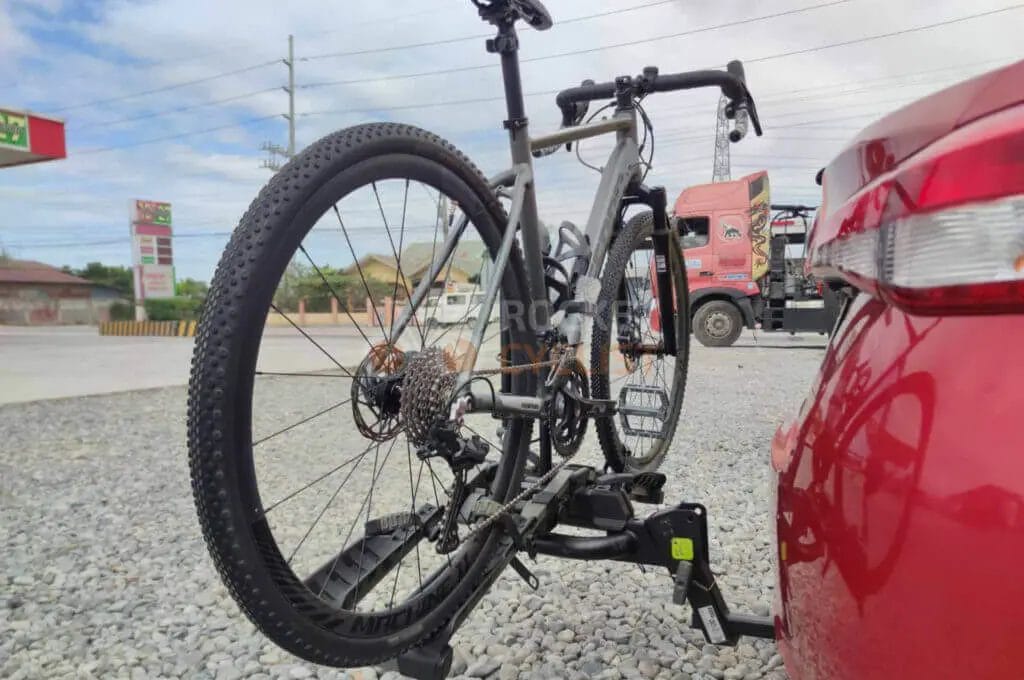Last Updated on July 28, 2024 by Vinson Lozano

Bike racks and carriers are indispensable tools for cyclists who wish to explore far-flung trails or transport their bikes with ease. Whether you’re planning a weekend getaway or commuting with your bike, understanding the nuances of maintaining your bike racks and carriers can significantly enhance your cycling experience. This guide delves into the best practices for upkeep and handling of these essential accessories, ensuring they remain in top condition and serve you well on all your cycling adventures.
Key Takeaways
- Regular Inspection: Regularly check for any signs of wear, rust, or damage.
- Proper Installation: Ensure that the bike rack or carrier is installed correctly to avoid damage to your vehicle and bike.
- Cleaning and Lubrication: Keep the rack or carrier clean and well-lubricated to prevent rust and ensure smooth operation.
- Load Capacity: Adhere to the manufacturer’s recommended weight limit to avoid overloading.
- Security Measures: Use locks and security features to protect your bike from theft.
- Storage Solutions: Store your bike rack or carrier properly when not in use to extend its lifespan.
- Professional Checks: Consider professional inspections or repairs for complex issues.
Understanding Bike Rack and Carrier Maintenance
Maintaining your bike rack or carrier is crucial not only for the safety of your bike but also to prevent damage to your vehicle. Here’s how you can keep your bike transport equipment in the best shape:
Regular Inspections and Immediate Repairs
Inspect Your Rack Regularly
- Check for any loose components, rust, or wear and tear every time you mount the rack to your vehicle. This includes inspecting straps, bolts, and the rack frame.
Address Rust and Corrosion
- If you spot rust, clean the area with a wire brush and apply a rust inhibitor to prevent further corrosion.
Installation and Load Management
Follow Installation Guidelines
- Always refer to the manufacturer’s manual for installation instructions to ensure optimal safety and functionality.
Understand Load Limits
- Be aware of the weight capacity of your bike rack and avoid overloading it. Distributing weight evenly can also prevent undue stress on the rack.
Cleaning and Storage
Cleaning Techniques
- Clean your bike rack with soapy water and a soft brush to remove dirt and grime. Avoid harsh chemicals that can damage the rack’s finish.
Proper Storage
- When not in use, store your bike rack in a dry, covered area to prevent exposure to harsh weather conditions, which can lead to rust and degradation.
Security and Theft Prevention
Use Locks and Anti-Theft Devices
- Secure your bike and the rack with high-quality locks. Consider additional anti-theft devices like alarms for added security.
Conclusion: Ensuring Longevity and Reliability
Maintaining your bike racks and carriers is essential for ensuring their longevity and reliability. By following these maintenance tips, you can enjoy seamless adventures without worrying about equipment failure. Regular care and attention will keep your bike transport tools in excellent condition, ready for your next cycling trip.
Explore More About Bike Transportation
For those looking to expand their cycling horizons, consider exploring advanced bike transportation techniques and equipment. Always seek professional advice for complex maintenance issues to keep your gear in top-notch condition.
We’d love to hear your experiences or any questions you might have about maintaining bike racks and carriers! Feel free to share in the comments below.
Frequently Asked Questions
- How often should I inspect my bike rack?
- Inspect your bike rack each time you plan to use it and after any long trips to ensure it remains in good condition.
- What is the best way to clean a bike rack?
- Use mild soap and water with a soft brush. Avoid abrasive materials and harsh chemicals.
- Can I repair a rusted bike rack?
- Yes, remove rust with a wire brush and apply a rust inhibitor. For severe cases, professional refurbishing might be necessary.
- How do I know if my bike rack is properly secured?
- Check that all straps and bolts are tightly fastened, and the rack does not move on the vehicle.
- What should I do if my bike rack is damaged?
- Replace any broken parts or consult a professional if the damage is significant.
- Is it necessary to lubricate any parts of the bike rack?
- Yes, lubricate moving parts and locks to ensure smooth operation and prevent rust.
- How can I prevent my bike from being stolen from the rack?
- Use high-quality locks and park in well-lit, secure areas. Consider additional security devices like alarms.
By maintaining your bike racks and carriers properly, you ensure the safety and longevity of your equipment, allowing you to explore with peace of mind.
